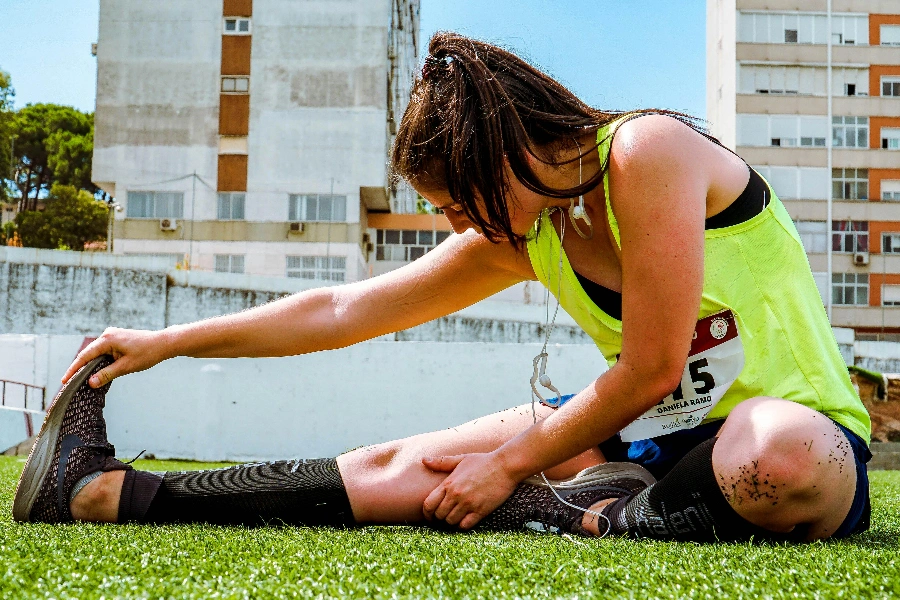Compression garments are a common way to manage circulation and reduce leg fatigue. Compression socks and sleeves both aim to support the legs’ healthy venous and lymphatic circulation. Still, each has a targeted design and application that makes them appropriate for particular areas of the legs. This leaves many wondering: Which is the better choice for me, compression socks vs sleeves?
Compression socks typically go up to the calf level or thigh. They offer graduated pressure, which is tighter at the ankle and less severe higher up the leg. This design is preferred by people who need full access to the legs to reduce swelling and pain. It is also popular among those aiming to enhance blood circulation without managing severe medical conditions.

Credit @RF._.studio on Pexels
Compression sleeves have a design that excludes the foot, focusing pressure specifically on optimizing the calf and lower leg performance. Athletes who need calf support while prioritizing freedom of foot movement prefer compression sleeves. Compression sleeves are ideal for activities such as basketball or cycling, where foot mobility is crucial.
Both compression socks and compression sleeves have unique applications. Individuals choose to wear one over the other based on their preferences and what they perceive as beneficial. Compression socks may be preferred for tougher applications, such as during travel or use for diabetes or varicose veins. However, compression sleeves are more convenient for input-requiring activities.
Benefits and Purposes of Compression Wear
Compression suitable for the socks and sleeves area is designed with several health and sports functions in mind. The graduated compression of the garment improves circulation, helps muscles relax, and prevents common circulatory problems and injuries.

Credit to Andrea Piacquadio | Pexels
Improving Blood Circulation
Socks and sleeves with compression create graduated compression. They are tighter at the ankles and gradually get looser up the leg. This design supports blood circulation by accelerating the blood flow from the legs to the heart and decreases the chance of blood clot formation and deep vein thrombosis (DVT). Compression clothing offers people a good solution, especially for pregnant women, people with a history of circulation problems, or athletes who do heavy workouts that can increase the risk of blood clots.
Supporting Muscle Recovery
Compression wear is an active player in both phases of the training, which include physical activity and recovery. It is one of the ways that it helps to avert ankle sprains, shin splints, and plantar fasciitis by keeping the muscles stabilized and not straining them and the body. Athletes or individuals participating in daily exercises can advance muscle restoration and reduce soreness significantly by wearing compression wear.

Credit to Andrea Piacquadio | Pexels
Preventing Swelling and Injuries
Compression socks and sleeves consistently provide compression. Their main function is to protect against swelling of the lower extremities. Swollen feet may be a sensation familiar to people while sitting for a long time in an airplane or during sedentary work. Additionally, it is known that compression wear can prevent blood from pooling in the legs, which helps minimize symptoms like painful genesis, for instance.
Compression Socks vs Sleeves: What Are the Differences?
When choosing between compression socks and sleeves, one must consider their specific design features, the compression they provide, and the intended usage that dictates their benefits.

Coverage and Design Specifics
Compression Socks Cover the total foot and extend up to the calf or even thigh in some cases — a key distinction from sleeves. Compression Sleeves begin at the ankle and end just below the knee, with feet left open. This fundamental distinction in design influences fit and function: compression socks treated the matter holistically by incorporating the feet, but compression calf sleeves narrowly addressed the calf.
Compression Technology
The Compression Levels vary considerably in both socks and sleeves, but generally, the technology for both garments is graduated compression. Graduated compression means that the level of compression tightness gradually lowers from ankle to top. This technology is essential to increase circulation and prevent blood pooling in the lower legs. The decision to use compression socks or compression sleeves will likely depend on whether the wearer needs foot compression along with calf support.

Credit @cottonbro studio on Pexels
Intended Usage and Benefits
The key difference between Compression Socks and Compression Sleeves is their intended use. Compression socks are often designed for prolonged periods of standing or sitting, such as for travel or some occupations. Individuals working as flight attendants or drivers might find them beneficial. On the other hand, both socks and calf sleeves are used for athletic recovery, reducing muscle fatigue and ameliorating blood flow. Owing to the capacity for freedom of foot and ankle action, athletes may prefer calf compression sleeves when working out.

Credit to Craig Adderley | Pexels
How to Choose the Right Compression Wear
Choosing the right compression wear involves understanding the specific compression levels that suit your needs and assessing personal requirements such as health conditions, the duration of wear, and the activities you’ll engage in.
Considering Compression Levels
Compression levels determine how hard or soft compression socks or sleeves work on the legs. Blood pressure is generally measured in millimeters of mercury (mmHg). It’s essential to choose a compression level that conforms to your needs, whether for sporting activities, medical uses, or comfort while you sit or stand for a long time.

Healthcare providers commonly prescribe compression levels above 20 mmHg. However, compression levels that are lighter in weight can be chosen by individuals according to personal preference.
- Mild Compression (8-15 mmHg): Good for people enduring long hours of standing and want some support for their leg.
- Medium Compression (15-20 mmHg): Designed for minor blood circulation problems such as mild leg pain and swelling.
- Firm Compression (20-30 mmHg): Recommended for nearly all types of medical illnesses and post-surgery recovery.
- Extra Firm Compression (30-40 mmHg): Generally used under doctors’ supervision for severe venous diseases.
Assessing Personal Needs
When choosing between compression socks and compression sleeves, consider your specific use case:
Compression Socks: An excellent choice for people whose foot compression is needed, such as those flying for a long time or who are likely to get leg swelling.

Compression Sleeves: Various for athletes who may already wear performance socks because the sleeves offer compression on the calf without covering the foot.
Some of the compressive garments are created for therapeutic purposes, and others are made for quick sports use. See your doctor to make sure the supplement you choose is suitable for any medical conditions you might have. Recognize that the optimal compression garment is the one that responds to your unique requirements and offers the required result without compromising comfort or health issues.
Practical Tips for Using Compression Wear
Compression wear could be incorporated into daily routines, but it can help muscle recovery and circulation, which is advantageous during high-intensity workouts without proper circulation. Being aware of the right time to use compression garments and the process of their care determines their sufficientness and durability.

Credit to Victor Freitas | Pexels
Wearing Schedules and Durations
Compression socks provide graduated compression, with the greatest level of compression at the ankle and gradually decreasing pressure up the calf. This design helps the blood flow from the feet to the heart, thus avoiding issues like swelling and bad circulation.

How do compression socks work?
Source: https://www.pebbleuk.com/article/130/do-compression-socks-work/
Compression socks provide the greatest benefit when they are worn during long periods of inactivity, for instance, during a long flight or after hard training activity, in order to accelerate recovery.
The difference between the wearing schedule for compression socks and sleeves could be a factor in your choice; the socks can be worn at any time of day or night, while the sleeves are mainly worn during specific time frames to focus on muscle recovery.
- Daily Use: wear compression socks if standing or sitting for an extended period.
- Post Exercise: To facilitate muscle recuperation, put on compression sleeves for a few hours after an intense workout.

Credit to RUN 4 FFWPU | Pexels
Maintenance and Care
Maintaining the integrity of the compression fabric is essential to access its benefits fully. Compression socks and sleeves should be washed after each use to remove sweat and bacteria that will eventually start to decay the material.
Washing Instructions: Hand washing or using a gentle cycle in cold water, followed by air drying. Steer clear heat as it destroys the elastic fiber.

Source: https://www.wikihow.com/Wash-Socks-in-the-Sink
Storage Tips: Store the item in a cool and dry place – without folding or crimping that might make the garment stretch.
Conclusion
Deciding between compression socks and compression sleeves requires understanding your specific needs. Compression socks are strongly recommended for people who require foot support and plant fasciitis because they cover the foot and calf.
However, some people might opt for compression sleeves that provide support for calves and leave the feet at liberty. Both garments offer benefits such as promoting circulation and reducing muscle fatigue. Additionally, wearing compression socks offers added assurance and protection against varicose veins.
Choosing the appropriate type based on activity and medical condition is crucial. Compression sleeves could be the preferred sportswear choice for athletes with unrestricted movement. However, socks could provide coverage for one’s legs while standing. Fundamentally, the personal inclination and the sphere of considerations push the decision.




